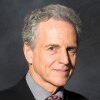In Brief:
- Chronic absenteeism and homelessness have both been on the rise since the pandemic.
- Rates are significantly higher among homeless students, affecting their graduation rates and future prospects.
- The Paradise, Calif., school district is included in a new report highlighting strategies for addressing this problem that are achieving results.
The Paradise, Calif., Unified School District cut its chronic absenteeism rate in half over the past five years. Absenteeism has been on the rise everywhere since COVID-19, but Paradise had the added challenge of coming back from a wildfire that nearly destroyed the town and left many students homeless.
The Camp Fire hit Paradise in November 2018. For a time, most of the district itself was displaced. A middle school relocated to an unused hardware store, a high school to a former Facebook building in nearby Chico.
“We used churches and teen centers and the fairgrounds,” says Dena Kapsalis, PUSD’s director of student services.
Every worker in the district was called upon to help bring students back. The approach to truancy shifted away from punitive measures to helping families overcome barriers, including needs for food and clothing. Counselors were placed in classrooms. The district created a new position to coordinate recovery efforts and another to manage donations.
PUSD repaired and rearranged its campuses sufficiently to welcome students back by the start of the 2019 school year. But in March 2020, COVID-19 forced school closures. Attendance took a second hit, with a new set of challenges.
The consecutive crises transformed how PUSD saw its place in the community and its relationships with families. Its subsequent efforts to reach out to struggling kids saw success. As many as 40 percent of PUSD students were chronically absent at one point; it’s half that now. School leaders from places as far flung as Ukraine; Maui, Hawaii; and Altadena, Calif., have consulted PUSD for guidance.
Not Just a Kid
Chronic absenteeism is defined as missing 10 percent or more of the school days in a year, for any reason. Students who miss this much school are much less likely to graduate (see chart). They are more likely to be disadvantaged already, affected by economic or social factors that success in school could help them overcome.
More than 1 in 4 students in the U.S. were chronically absent during the 2022-2023 school year. In 20 states, the share was 1 in 3, or more. The rate climbs to almost half among homeless students, and the number of homeless families with children increased almost 40 percent in 2024, following a 16 percent increase the year before.
In the aftermath of the fire, every PUSD employee was asked to go beyond the schoolhouse gate and into the community to find families and learn their needs, says Kapsalis. Staff spent hours on Facebook or connecting with parents and students in the grocery store across the street from the district office. Food service staff took meals to places where buses used to collect students. Counselors rode with them.
Interactions that revolved around the survival of families — and the town itself — changed the framing around school attendance. Each student missing class was tangled in an obstacle of some sort, whether lack of transportation, a personal crisis or the need to babysit for a working parent.
“It’s not just a kid walking through that door, it’s a human being,” says Cris Dunlap, outreach coordinator for PUSD.
Filling Gaps
Dunlap has been both a teacher and administrator for the district. Today, her job is reaching out to absent and homeless students and connecting them to resources that can help them stay in school. She might accompany a student to the county social services office and help them sign up for Medi-Cal (the state’s Medicaid program) or other services. Or help a laid-off parent find a job.
Before the start of a new school year, every teacher in PUSD now receives a list of students who were struggling with chronic absenteeism the year before. “Prior to the first day of school, they’ll start reaching out and wrapping around those kids and families,” says Kapsalis. This can include home visits by Dunlap.
As district staff worked to assist families in getting the help they needed, it became apparent that there were gaps in what was available locally. The day the Camp Fire swept through Paradise, Carrie Dawes was the student services administrator. She helped load students onto buses to get to safety.
Following the fire, she took on the job of working with county mental health agencies to bring counselors to the district. She also wrote grants, one of which garnered funds to improve PUSD’s ability to provide support that could keep students in classrooms.
The PUSD Health and Wellness Resource Center, operating out of a building on one of the district’s elementary school campuses, expands the resources the district can offer to families. It had a formal opening in March, with Dawes as director.
The center partners with organizations ranging from the Butte County Public Health Department to a community center offering space for events, training and classes. It can connect residents with services that include counseling, wellness programs, afterschool jobs, dental care and nature-based therapy.
One Mission
PUSD was among the districts included in a recent report from Attendance Works and SchoolHouse Connection. Through case studies, it highlights 10 key strategies for getting unhoused students back into the classroom that can achieve results.
Progress starts with a solid strategy for identifying homeless students, then tracking them by name and need, says Phyllis Jordan, who researched the report. Chronic absence itself is a string to pull to identify homeless students, says Attendance Works founder Hedy Chang.
Kapsalis continues to push for missed days going down, with a focus on one mission.
“Doesn’t matter where you are in the organization,” she says. “You may work in payroll, you may change the oil in the buses, you may be the superintendent.
“You’re here to graduate a kid from high school.”









